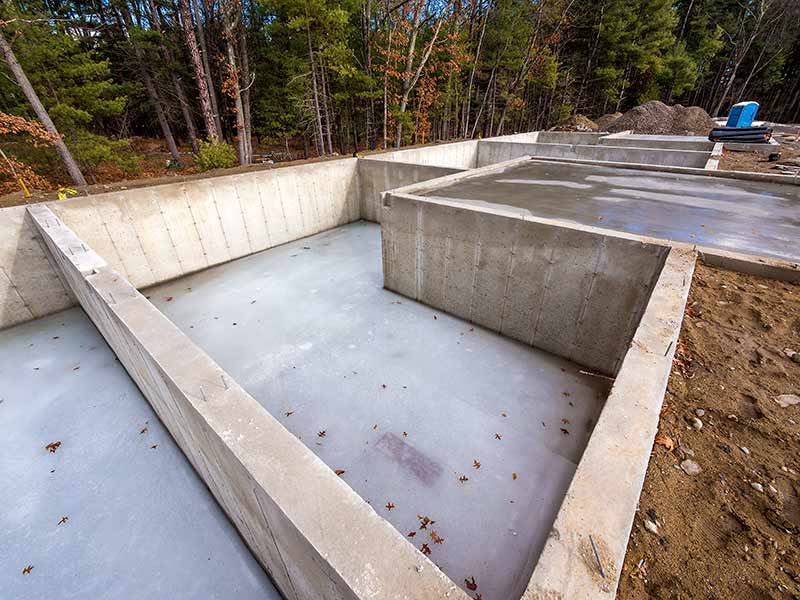Types of Deep Foundations and Their Uses

Poor soil conditions at shallow depth, huge design loads, and site constraints such as property lines can make a deep foundation a better option than one that is shallow. Deep foundations carry building loads to more competent strata that are down too far below the ground level, preventing the surface conditions from affecting their base bearing capacity. They usually go beyond 3 meters below the finished ground surface.
What Are the Types of Deep Foundations?
Examples of common deep foundations include:
- Pile foundations
- Caissons
- Cylinders
- Basements
- Hollow Box Foundations (Buoyancy Rafts)
- Shaft Foundations
Pile Foundations
Pile foundations are constructed through driving preformed units into the required founding level or by drilling in, driving tubes filled with concrete to the desired depth. The tubes can be filled with concrete in different ways – they can be filled during or before withdrawal, or through drilling unlined, partly lined, or wholly lined boreholes before being filled with concrete.
These foundations are used when the soil, constructional or economic conditions make it necessary to transmit loads of structures to strata that are beyond the reach of shallow foundations. Besides supporting structures, piles can be used to help resist uplift, overturning, and lateral forces. They are used as foundations for waterfront installations, bridges, and buildings.
Caissons
These are hollow substructures that can be constructed near or on the ground surface and are sunk to the desired level as a single unit. They have an enormous load-carrying capacity and are commonly used for bridges.
Cylinders
These are small caissons with only a single cell.
Basement Foundations
These hollow substructures provide storage or working space below the ground level. They’re constructed in open excavations. The functional requirements govern their structural design.
Buoyancy Rafts
Buoyancy rafts, also known as hollow box foundations, are designed to create a semi-buoyant or buoyant substructure below which the loading on the soil is decreased to the required low intensity. They can be constructed in open excavations or sunk like caissons.
Buoyancy rafts are more expensive than traditional forms of foundations. For that reason, their use is usually restricted to sites that are on silts, soft sands and other alluvial deposits that are very deep, or where loads can be kept concentric. Schemes requiring underground tanks or where it’s economical to incorporate deep basements into the design are common.
Shaft Foundations
These foundations are constructed by drilling a cylindrical hole within a deep excavation and subsequently placing concrete or another prefabricated load-bearing unit in it. Their length and size can be easily tailored. Drilled shafts can be constructed near existing structures and under low overhead conditions, making them suitable for use in numerous seismic retrofit projects. It may, however, be difficult to install them under certain conditions such as soils with boulders, soft soil, loose sand, and sand under water.
If you’re in the Bay Area and looking for excavation or deep foundation services contact Lassiter Excavating.
Lassiter Excavating is a pool removal, excavation, and pier drilling company in the San Francisco Bay Area. We have much experience in a variety of deep foundation types, methods, and techniques that provide cost-effective and long-term solutions. We have a highly qualified and knowledgeable workforce that works hard, pays attention to detail, and delivers exceptional customer service. Contact us online or call us at 925-449-3112 to get a free quote.

